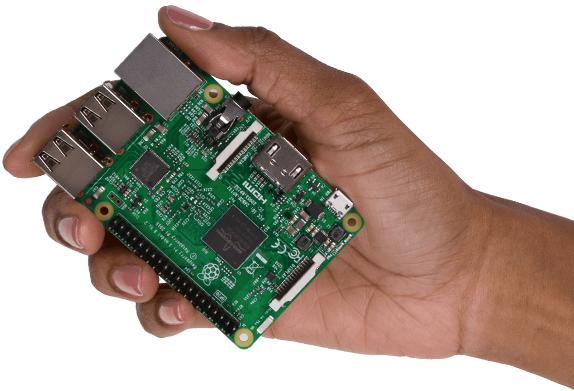 No one I know is more enthusiastic about Raspberry Pi than Kyle Wilke of Valencia Elementary. In addition to using Pi in his SpEd classes, he runs an after-school coding club for Valencia students. He's been to Picademy, a very selective professional development program sponsored by the Raspberry Pi Foundation. He is working to put on a Raspberry Pi Jam in the spring, a day-long fair where students and adults can show off what they have made and learn more about the devices. And at our Innovative Practices Saturday Summit on Oct 21, he led a workshop for SVUSD teachers on why and how to use Pi in classes.
No one I know is more enthusiastic about Raspberry Pi than Kyle Wilke of Valencia Elementary. In addition to using Pi in his SpEd classes, he runs an after-school coding club for Valencia students. He's been to Picademy, a very selective professional development program sponsored by the Raspberry Pi Foundation. He is working to put on a Raspberry Pi Jam in the spring, a day-long fair where students and adults can show off what they have made and learn more about the devices. And at our Innovative Practices Saturday Summit on Oct 21, he led a workshop for SVUSD teachers on why and how to use Pi in classes.
If you are not familiar with the Raspberry Pi family, they are small and cheap ($5 to $35) fully-functioning computers. You can attach a standard mouse, keyboard, and monitor and use it like any other computer, with web browsers, office programs, games, and programming. The real advantage to these, though, is that the board is open and has an array of input and output pins (on the bottom left in this image). This allows students (or adults) to connect a variety of sensors, motors, lights, speakers, displays, cameras, or other devices that can then be controlled by programming languages. There are tons of projects, tutorials, and ideas out there for inspiration and instruction, at sites like PiMyLifeUp, Adafruit, Instructables, Electronics Hub, and many others.
I bought my nephew a Pi Zero, along with keyboard, mouse, and monitor, a few years ago as a Christmas present. At the same time, I bought myself one, but haven't really done anything with it. Inspired by Kyle, though, I bought two Pi 3s for two projects I had in mind. Using one, I installed a Plex video server to stream the movies and TV shows we've bought on DVD. The Pi can run 24/7 since it uses very little power and has no moving parts to wear out. The second I'm going to use as a pet camera, so we can watch our dog bark insanely at invisible beings while we're not home.
Raspberry Pi starter kits are inexpensive and easy to use. Title I schools already have a few, purchased last month. At other schools, talk to your principal or parent organization to see if they can purchase a couple for you to start using with your students!




Comments
Post a Comment